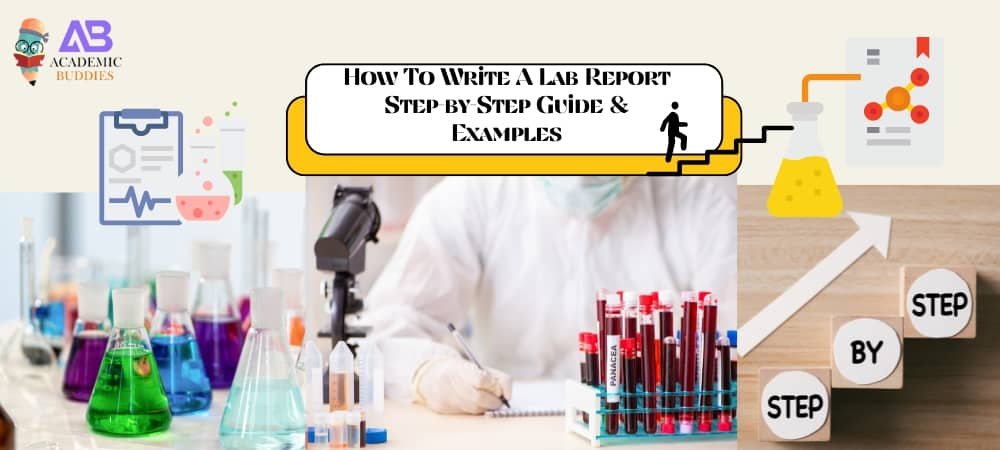Crafting a lab report is an essential skill for students and professionals in various scientific fields. It’s not just about presenting data; it’s an art of communicating your experimental journey, from hypothesis to conclusion. In this guide, we delve into the nuances of creating a lab report that not only adheres to academic standards but also engages the reader with clear and concise information. Whether you’re a seasoned researcher or a budding scientist, mastering the lab report is a crucial step in your scientific endeavors. Let’s explore how to transform your observations and results into a compelling narrative that effectively conveys the significance of your work.
Essential Elements of a Lab Report
Creating a lab report involves a structured approach to ensure clarity and coherence in presenting scientific findings. Here are ten key components that form the backbone of a well-organized lab report:
- Title: The title should be concise yet descriptive, accurately reflecting the essence of the experiment.
- Abstract: This is a brief summary of the report, highlighting the main objectives, methods, results, and conclusions.
- Introduction: Here, you set the stage for your experiment, outlining the background, purpose, and hypothesis of your study.
- Materials and Methods: Detail the equipment, materials, and procedures used in the experiment, providing enough information for replication.
- Results: Present the data collected during the experiment. This section should be clear and factual, often using tables and graphs for illustration.
- Discussion: Analyze and interpret the results. Discuss whether the findings support the hypothesis, and explain any anomalies.
- Conclusion: Summarize the key findings and their implications, reinforcing the significance of the experiment.
- References: List all the sources cited in your report to acknowledge the original work of others and to provide readers with additional reading material.
- Appendices: Include any supplementary material that is relevant but not integral to the main text, such as raw data or detailed calculations.
- Figures and Tables: These should be used to effectively present data and should be clearly labeled and referenced within the text.
Each of these elements plays a vital role in crafting a comprehensive lab report that effectively communicates your scientific investigation.
Crafting the Perfect Title for Your Lab Report
The title of your lab report is your first opportunity to captivate and inform your reader. It should be a clear, concise beacon, guiding them to the heart of your experiment. A well-crafted title succinctly describes the core of your study, blending precision with just enough detail to spark interest. Think of it as the headline of your scientific story, setting the tone for the insightful journey that unfolds in your report.
Abstract in Lab Reports
An abstract in a lab report is a succinct synopsis that offers a snapshot of your study. It efficiently outlines the experiment’s purpose, methodology, key findings, and the overarching conclusions. This section is crafted to give readers a quick, yet comprehensive overview, enabling them to grasp the essence of your research without delving into the full report. It’s the condensed heart of your scientific narrative, capturing the critical elements of your investigative journey in a clear and concise manner.
To write a lab report abstract, consider these guiding questions: What was the central aim of your study? How did you approach your investigation, and what methods were employed? What were the standout findings or results? How do these results tie into the broader context of your field? An effective abstract succinctly answers these queries, offering a snapshot of your experiment. It should encapsulate the essence of your research, providing a clear and concise overview that intrigues and informs the reader.
Introduction in Lab Reports
The introduction of a lab report is where the magic begins. It’s a launchpad that sets the context for your scientific exploration. Here, you succinctly outline the purpose and objectives of your experiment, providing a glimpse into the scientific question you’re addressing. It’s like a roadmap, guiding the reader through the background of your study, leading up to the hypothesis. For instance, if your report is on the effects of sunlight on plant growth, your introduction would briefly discuss previous research in this area, setting the stage for your unique investigation. This section is crucial for hooking your reader’s interest and laying the foundation for your experimental narrative.
Materials and Methods in Lab Reports
The ‘Materials and Methods’ section of a lab report is where you detail the tools and procedures used in your experiment. It’s crucial for replicability and transparency. Start by listing all materials used, from chemicals to equipment, ensuring everything is specified. Then, describe the methodology in a step-by-step format. For instance, if you’re conducting a chemical reaction, mention the quantities, conditions, and sequence of adding reagents. If it’s a biological experiment, include the species, strains, and environmental conditions. Remember, clarity is key; your goal is to enable others to replicate your experiment accurately.
Results in Lab Reports
The Results section of a lab report is where you present the core findings of your experiment in an objective and straightforward manner. It’s crucial to display your data clearly, often through tables, graphs, or figures, to help readers quickly grasp the outcomes. For instance, if your experiment involved testing the effect of temperature on plant growth, you would detail the growth measurements at various temperatures. Remember, this section is not for interpretation; it’s purely for stating what the data shows. For example, “At 30°C, the average plant height was 15 cm, compared to 10 cm at 20°C.” This clear, factual presentation of results allows readers to understand the experiment’s outcomes before moving on to the Discussion section, where these results are interpreted and analyzed.
Discussing Findings in Lab Reports
The Discussion section is where you breathe life into your lab report, weaving together your findings and their broader implications. Here, you interpret the results, comparing them with your initial hypothesis and existing literature. It’s a space to ponder over what the data reveals, any unexpected twists, and the possible reasons behind them. For instance, if your experiment on plant growth yielded surprising patterns, this is where you explore environmental factors or genetic variables that might have played a role. The key is to blend analytical thinking with scientific curiosity, offering insights that extend beyond mere data points. This section is not just about what happened, but why it matters in the grand scheme of scientific inquiry.
Crafting an Impactful Conclusion in Lab Reports
A well-written conclusion in a lab report is crucial for encapsulating your findings and their broader implications. It’s where you succinctly summarize the key outcomes of your experiment, reflecting on the initial hypothesis and the data gathered. This section should not only restate the results but also highlight their significance in the context of the research question. For instance, if your experiment involved testing the effects of temperature on plant growth, your conclusion might underscore how your findings align with or challenge existing theories in plant biology. It’s an opportunity to suggest potential areas for future research, thereby extending the conversation beyond your study. Remember, a compelling conclusion leaves a lasting impression, making your lab report not just informative but also thought-provoking.
References in Lab Reports
In lab reports, references are crucial for acknowledging sources and enhancing the credibility of your work. They serve as a testament to the depth of your research and the foundation of your experiment’s rationale. Proper citation not only respects intellectual property but also allows readers to trace the origins of your ideas and data. For instance, if your study is on the effects of a certain chemical on plant growth, you might reference Jones et al.’s 2018 study on similar phenomena. Always adhere to the specified citation style, be it APA, MLA, or another format, ensuring consistency and accuracy in your bibliography. This attention to detail in referencing reflects the rigor and integrity of your scientific inquiry.
Appendices in Lab Reports: A Closer Look
Appendices in lab reports are the unsung heroes, offering a detailed backdrop to the main narrative. They serve as a repository for extensive data and materials that are crucial for understanding the experiment but might clutter the main sections. For instance, if your lab report discusses the growth patterns of bacteria, the appendices might include comprehensive tables of growth rates under different conditions, or detailed procedural steps that were too lengthy for the methods section. By including such detailed information in the appendices, your report remains concise yet thorough, ensuring that interested readers have access to all the necessary data for a deeper dive into your study.
Figures and Tables in Lab Reports
In lab reports, figures and tables are pivotal for illustrating and summarizing complex data. They provide a visual representation that can make your findings more accessible and understandable. Figures often include graphs, charts, and images, each carefully labeled and referenced in the text. Tables, on the other hand, are great for organizing data in a clear, concise manner, allowing readers to quickly grasp the numerical values and trends observed in your experiment. Both figures and tables should enhance the report’s clarity, not just repeat information, and must be accompanied by descriptive titles and, if necessary, explanatory notes.
| Element | Purpose | Key Features |
| Figures | To visually represent data | Include graphs, charts, images; clearly labeled; referenced in text |
| Tables | To organize and present data systematically | Concise presentation of numerical data; descriptive titles; may include explanatory notes |
| Integration | Complement the report’s narrative | Should align with and support the textual content |
| Clarity | Enhance understanding of the report | Avoid clutter; focus on relevant data; ensure readability |
| Referencing | Guide readers through the report | Figures and tables should be numbered and cited in the text |
| Consistency | Maintain uniformity throughout the report | Consistent style and formatting for all figures and tables |
| Accuracy | Reflect precise data | Ensure data presented is accurate and corresponds to the text |
| Relevance | Directly relate to the experiment | Only include figures and tables that are essential to understanding the results |
| Interpretation | Aid in data analysis | Should help in interpreting and drawing conclusions from the data |
| Documentation | Provide source information | If using external data or images, proper citation is necessary |
Conclusion
In wrapping up our exploration of crafting a lab report, it’s clear that the journey from hypothesis to conclusion is intricate and demands meticulous attention to detail. For students grappling with the complexities of physics assignments, the process can be particularly challenging. This is where Academic Buddies steps in as a valuable resource. Offering specialized physics assignment help, this platform provides the guidance and support needed to navigate the nuances of scientific reporting. Whether it’s structuring a report, presenting data through figures and tables, or articulating findings in a clear and concise manner, Academic Buddies is equipped to assist students in achieving academic excellence. Their expertise not only simplifies the process of lab report creation but also enriches the learning experience, ensuring that each report is a testament to thorough understanding and scientific rigor.


